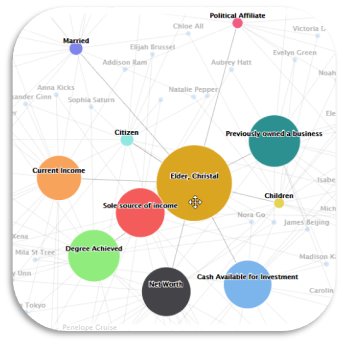The franchising industry has never been as diverse and dynamic as it is today. Millennial business leaders have charged into the sector, bringing creativity and strategic integrity along for the ride. While 44% of franchisors are Baby Boomers, innovative business technology has reinvented the way we think about franchising. Automation has not only changed the way franchisors do business with end users, but also the way brands connect with and train their franchisees. E-commerce has leaked into the sector, bringing globalized trade with it. Multi-unit structures still dominate, but fresh approaches to business models are adding some zest to the cocktail. Customer relationship management (CRM) and logistics systems are increasingly being used to streamline everything from marketing to warehousing. In the new decade, every inch of business movement will be measured, analyzed, and streamlined, and that leads to one thing: profits. CRM will get your business moving from the first letter of your franchise business plan until your ultimate exit.
Building a Franchise Business Plan that Assures You of Success
The brave new world of franchising demands more from your business plan than ever before. It’s not easy to set up a franchising model scalable enough to cover international markets and digital demographics. Your franchising model must cater to local and national markets without ruling out global ones. It must trade in the brick and mortar space, yet develop thrust in the digital marketplace as well. Your growth strategy needs to build a detailed route into your future, and your model is the foundation that will keep your path from crumbling as the decades pass. When you take your successful business into the franchising sector, you need to create a completely new business unit and plan.
In essence, franchising is a pivot from selling a product to selling a business concept. Your success no longer ends with you. You can only be profitable if your franchisees are profitable, but your fees, commissions, and structure weigh heavily on your revenue, too. How will you break even? How will you assure your recruits of grand success? How will you ensure that your product and brand remain consistent across thousands of units? Your franchise business plan will answer these questions.
Executive Summary
Your executive summary is a brief overview of your plan that’s intended to captivate funders and lenders. Think of it as a cross between a miniature business plan and a pitch deck. It should outline a clear business strategy through both data and substance.
Franchise Introduction
Your franchise introduction is potentially the last thing your potential investors will read about your franchise, so it needs to be compelling. It’s typically a three-page management overview of your franchise covering your business goals, description, and justifications for franchising your business. Include your profit milestones, competitive differentiation, and geographical considerations. The rest of your franchise business plan will pull apart all of these numbers in greater depth.
Franchise Description
This is your opportunity to express your vision. Your description includes your formation data, founders, markets, and location. If you’re franchising an existing business, your description should also outline your current pre-franchised business’ achievements.
SWOT Analysis
A franchise business plan isn’t just a dedication to everyone who might invest in your vision. It’s also an opportunity to tighten your own intentions. Your SWOT analysis will serve you more than it does your funders, but it’s integral to your competitive edge. It should include your brand’s strengths, weaknesses, opportunities, and threats, both in terms of your brand and whether franchising offers its best chance of success. Your SWOT positions you in the market alongside your rivals, so it will tell you if you need to pivot or diversify yourself before you launch. The market research you collect will unveil the fundamental problems that could annihilate your dream.

Product or Service Description
While the product your franchise sells matters, don’t neglect your new product: your franchise concept. Your product description should outline your development stage, pricing strategy, and any research and development you intend to do in the near future.
Marketing Plan
Business concepts can’t grow legs without a marketing strategy. Odds are excellent you’ll need to redraft your marketing approach entirely when you franchise an existing business, including key market and industry analysis for both your brand and franchise concept. Automation and machine learning can generate the data that will fuel this part of your franchise business plan. It might be tempting to start fantasizing about grand creative campaigns at this point, but flights of fancy will lack weight if they aren’t hooked into information. Even the most rudimentary research costs an average of $20,000, but there are two cheaper and more effective solutions: automation and machine learning. An AI-based CRM will send your forecasting to new heights, helping you to draft consumer profiles to fuel your ultimate marketing strategy.
Royalty Fees
Your royalty fee structure determines how sustainable your franchise will be. It covers your running fees while providing one of your core regular income sources. Your choice of fixed or percentage rates can mean the difference between firecracker profits and a monthly slog, but set it too high and you risk chasing away recruits. CRM software will do the number crunching on your behalf, running as many simulations as you need to find a reliable structure.
A Financial Forecast

The quality of your financial projections will determine how seriously your investors will take you, so make it count. Your franchise business plan is nothing more than a concept until you flesh out the forecasted numbers. This is the psychic of your plan, and it doesn’t always bring good news. It might convince you not to go into business at all. The deeper you dive, the more accuracy you’ll gain. Your forecast will include profit and loss, balance, and cash flow sheets, but don’t let those terms trap you in an accounting mentality. It’s intended to tell you where you’re going, not where you’ve been, so your calculations will be quite different. A forward-looking view defines your first and last moments as a franchisor. As such, it helps you to create your exit plan.
Planning for Your Exit
As important as it is, many entrepreneurs don’t have an exit strategy. If your franchise agreement and roll-out plan are the hors dóevres of your franchise business plan, your exit strategy is the dessert. This is your opportunity to reap rewards, but it’s a part of your meal and needs to be planned for from the beginning. No matter how tempting it is to reach beyond the “buy, build, sell” mentality, every investment needs to be parted with. Building in a way that supports an impressive valuation has its own rewards, and they arrive in cold, hard profits. Franchisors sell their franchises for many reasons. Retirement, fresh opportunities, and simple profit drive are three of the most common, and they may ultimately push you into a sale. Even so, it’s unwise to swim out into a lake if you don’t know its length, otherwise you risk drowning.
If you’re ready to leap into a great business opportunity from the beginning, you’ll gain control of the resale process. A formal exit plan is best drafted with the guidance of an attorney or accountant who is qualified to juggle the taxation issues relating to your sale and transfer of ownership. Your strategy should include a primary exit goal detailing who you expect to sell to and when. You needn’t make an absolute exit. Many franchisors take on an advisory role instead. Finally, you’ll need to list the actions you need to take to achieve your exit valuation.
Building Multiple Franchise Units Simultaneously
When Ray Kroc transformed McDonald’s from a neighborhood store into a global legend, he had a thousand dreams about taking the concept to the entire world, but one dream ruled them all: the desire to create a burger recipe that could be repeated customer after hungry customer without losing any quality. Once he’d struck beefy gold, his next dream was to do it repeatedly across franchises. To achieve that, he decided to start small. He built uniform systems to cover everything from his first unit’s administration to its management style and trademark. Only once he’d achieved that did he roll his business out to franchisees, and his slow, steady work was the reason for its resounding success. Today, it’s also the reason new franchisors use the Ray Kroc roll-out strategy.
Your initial roll-out of franchise units is, in many ways, the toughest educational experience you’ll ever face. Your learning curve will be more of a vertical line than a slope, and no amount of research will teach you all you’ll need to learn. This is something you must learn in practice, and there are a myriad ways to approach the challenge. One of the simplest is to avoid it entirely by building a single flagship unit before attempting a wider roll-out. This way, you can flatten the curve and pay closer attention to the tiny details that will one day characterize your brand. It will also allow you to recruit potential franchisees through a living business concept—and nothing is quite as convincing to recruits as legitimate sales figures and a queue of passionate customers.

A slow network roll-out lets you nurture your first recruits and solidify their success. When you aren’t juggling 20 units at once, you have the time to turn your franchise business plan into a living, breathing organism with its own marketing materials, logistics strategies, and on-boarding tactics. Each of your first franchises will need to be within driving distance to one another, but when you’re working with a new brand, your client base won’t be large enough to warrant a unit on every street corner. Slow market penetration should, however, lead to fast diffusion and adoption, but no strategy is completely airtight. You’ll experience lower profit margins initially but will be less likely to shoot holes in your brand identity.
Synuma can increase your diffusion rates and ramp up your profit margins by automating the rollout process. Why do it the Ray Kroc way when you can enjoy all the benefits without the drawbacks? This intelligent software will improve your decision making and let you shrug off many of your responsibilities by handling repeatable tasks in a standardized way. It will support your initial franchisees and offer you a more hands-free management process.The Development and Operations Modules won’t require you to develop your own systems, but membership gives you access to potent development tools that will support your roll-out where it counts for you. This is, after all, a unique brand that should be guided by your own values and priorities. Nobody ever achieved grand dreams by fitting inside someone else’s cookie cutter. Your roll-out plans will be very different if you’ll be relying on CRM software, so bear it in mind when you write your franchise business plan.
Lead Qualification
Franchising is one of the best growth strategies in the business world, but it’s not fail-proof. Living on the cusp of your own growth curve requires a powerful lead qualification strategy that will identify the recruits who will serve your brand profitably. One bad choice and you can send your business into a PR crisis that travels halfway across the world in a day’s worth of social media posts. Every unit you open requires a considerable investment of time and money, but reps consider lead qualification to be their greatest challenge. CRM software has become innovative enough to tell you which leads are engaged, which are merely curious, and which fit your target market like a second skin. The days when you had to qualify your leads over the phone are over. Machine learning and automation will handle the process while you’re on the road to meet your first franchisee—no independent research necessary. CRM technology generates an average return of $8.71 per $1 spent: a growth rate that increases exponentially when you’re selling franchises rather than products. Factor it into your franchise business plan, and you’ll draw a far more compelling picture for your investors and potential recruits.
Avoiding Fraudulent Business Practices

In 2018, several franchisees took their Vision Express franchise to court for coercion. The claimants felt they had been pushed into signing their franchise agreements—a claim the court found to be credible. The case highlighted the fact that not all contractual exclusions are enforceable. The franchise sector marches in lock-step to a huge array of regulatory confusion, and both franchisors and franchisees must overcome it. Drafting a tight franchise agreement is no solution. Fairness and truth must prevail. Vision Express misrepresented their franchise in three areas:
-
The likely profits of each store
-
The ratio of eye tests and glasses sales
-
The overdraft repayment period
Ignorance is no excuse for misrepresentation, so the drafting of your agreement is one of the most complex tasks you’ll ever complete. In short, your projections, metrics, and other calculations need to be on point from your very first franchise business plan. Any sales process is weighted with risk, but franchising is particularly challenging. You can mitigate your risk through liability exclusions and boilerplate limitations, but inaccurate numbers will leave you floating out in space with no gravity to hold you down.
Not all sales fraud occurs after the point of purchase. Misrepresentation can sneak into the recruiting process as well. All in all, your FDD must cover several core facets under federal law. They are:
-
Background data about you as a franchisor
-
History of litigation
-
Clients and territories
-
Ongoing costs
-
Financial statements
-
Initial and long-term costs
-
Trademarks
Transparency and honesty are more than mere values. They’re required by law, but cost estimates are difficult to build if you’ve yet to open your first few units. This is where AI and machine learning come in. They can help you to flesh out the bare bones of your future in a transparent and reliable way.
Most businesses wait six years before rolling out their first franchise unit, but with the power of AI and automation, you can leap ahead of your own curve and tweak its growth to your own strategy. Once you’ve perfected your first roll-outs, machine learning will nudge it towards success one improvement at a time. Every franchise launch will be a learning process that makes the next launch smarter and more profitable thanks to data collection and analytics.













